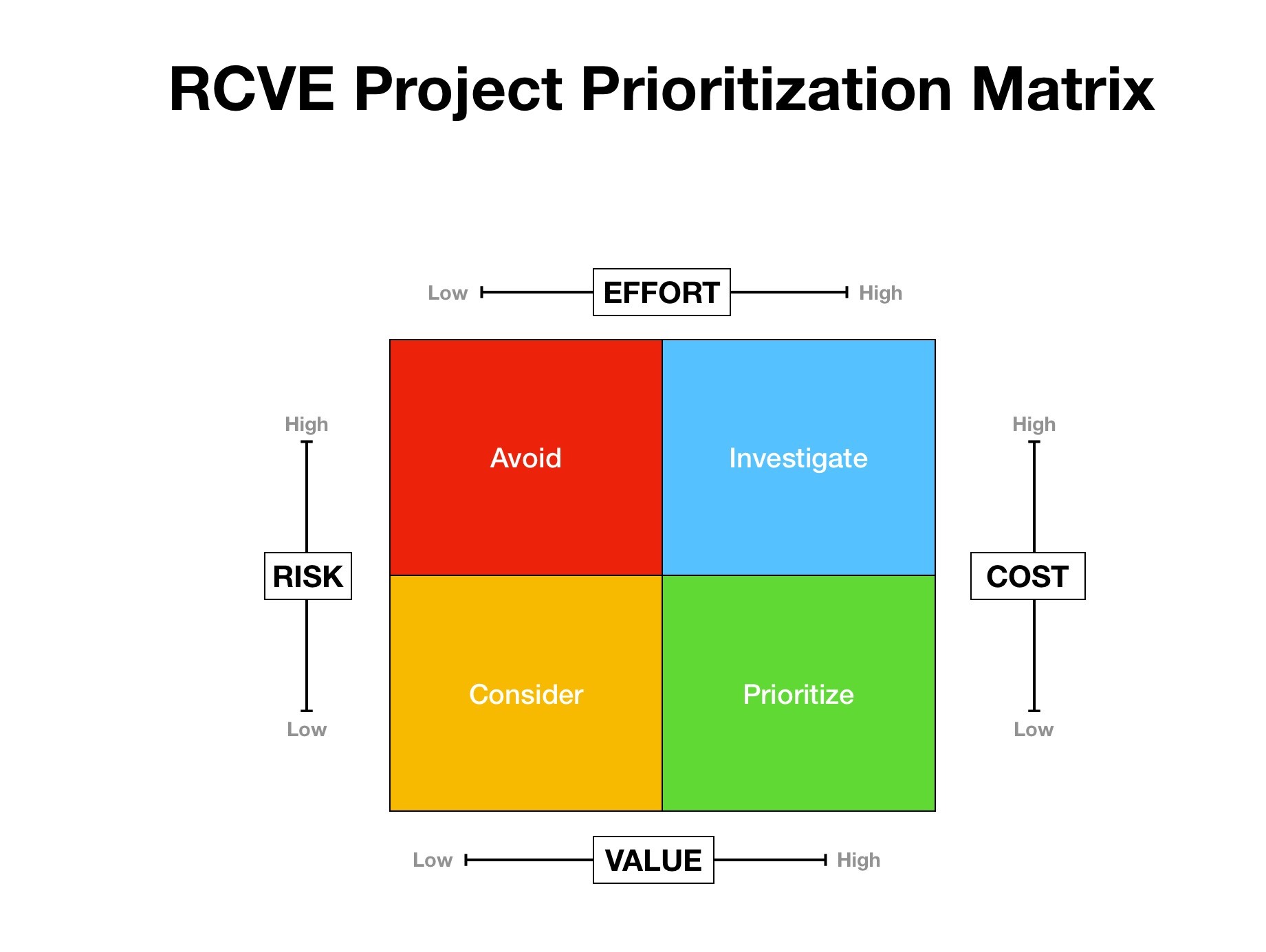
For product managers working in Agile/Scrum organizations, featuring and task prioritization is important for effective roadmap planning. Out of all the features you consider, prioritization helps identify the order of importance and drives the delivery of the work that achieves organizational goals. We are continuing our series this year on various techniques. In this edition, we will describe the popular prioritization technique called The Risk-Value-Cost-Effort (RVCE) prioritization matrix and how you can use it to categorize and prioritize your features. This is very similar to our article on RICE.
RVCE Prioritization Matrix
RVCE is a two-dimensional matrix with four quadrants that helps assign each task or feature based on four decision criteria; Risk, Value, Cost, and Effort. Each of its quadrants represents the decision outcomes or categories the features/issues you consider belong to. The four decision categories are Consider, Avoid, Investigate and Prioritize.
Each decision criterion in the x and y-axis shows the intensity of it from low to high. By considering each decision criterion's high, moderate, and low intensity, you can mark to which quadrant a particular feature should assign. At the end of the categorization, you have a visual of what you need to consider, avoid, investigate, and prioritize.
- Risk - The potential to lose something or gain something valuable. The feature can be considered or prioritized based on the other three criteria for the roadmap when risks are lower.
- Value – The quality of the feature to be considered. The higher the value, the more the feature must prioritize if the risk and the cost are lower but take significant effort.
- Cost - How much money do you need to complete a specific feature? If the cost is higher, that feature should be something to avoid or keep to investigate more about it.
- Effort - How much time and resources do you require to implement the feature? If the effort is too high, it must be a high-value feature. However, if the effort is too low, it can be something you should avoid implementing.
Likewise, each feature can be categorized based on the high or low values of the above four conditions. According to this matrix, the features/tasks that have low cost and risk but needs significant effort to implement and generate more value are the ones that you need to prioritize for your product roadmap.

For example, suppose you want to migrate your existing applications in data centers to a cloud environment. In that case, switching your databases to the cloud can be risky. The effort for migration in this scenario is also high. You will need more resources like Devs, DBAs, QEs, etc., and the initial transition will also be significantly high. But, if you evaluate this task based on its potential value, the whole migration provides some value to the organization in terms of efficiency, scalability, etc. Thus, this example task generates a higher value. Considering these factors, this task will belong to the list of tasks you need to ‘Investigate” or quadrant 2.
Let’s take another example. Suppose you want to implement an efficient queue system to replace the old one. Since this feature is not customer-facing, its value will only be for your system efficiency. The effort and cost of this transition will also be moderate. However, there can be downtime for this impacts customers who indirectly use this feature. Thus, the risk of this transition is high. Therefore, the most suitable category this feature belongs to is quadrant one or avoid.
Steps to follow when you use RVCE Matrix for prioritization
Like in many other prioritization exercises, you can follow the below steps to use this technique to identify the most important items you need your team to work on in your next project.
- First, as this is a group effort, you must gather all the stakeholders required for the prioritization.
- As shown in the above figure, draw the RVCE Matrix on a whiteboard, or if you are gathering online, you can use an excel sheet of specific collaboration tools to draw it. Then, explain to each team member what each quadrant means so everyone will be on the same page.
- Discuss and agree on the definition of four decision criteria, so everyone has a consistent evaluation.
- Provide the list of tasks and features to be prioritized for each member with a clear explanation.
- Take one task/feature at a time, discuss your team member's ideas, and evaluate each item based on Risk, Value, Cost, and Effort. During the evaluation, discuss how each feature impacts the organizational goals and customer satisfaction which helps to come up with a more accurate evaluation.
- After the evaluation, come to a consensus on which quadrant the considered task/feature belongs in the matrix and place it on the RVCE Matrix you have drawn.
Once you have marked each item in your list in the appropriate quadrant in the matrix, you can decide what you need to take into the next roadmap for implementation. Items in Quardrant 1 you can eliminate since they have a high risk and cost but less value. The quadrant two items need to be investigated further since the risks associated with implementing them will be higher. The quadrant three features are for you to consider for future implementation since their four criteria are low, including the value they generate for the business and the clients. Quadrant 4 items are the work you should implement and include in your roadmap.
Conclusion
The more techniques that we can explore to help our stakeholders prioritize the infinite list of things to do against finite capacity and time; the better our teams will be protected from thrash. Remember that these techniques aren't meant to serve as the decision maker. We as people are the decision makers, these tools just help center the conversations appropriately. In the future, we will cover the roadmap planning process as a hole and how this fits in, see a previous / similar article here.
We discuss various prioritization techniques in our Product Owner workshops (which are also good for ScrumMasters).